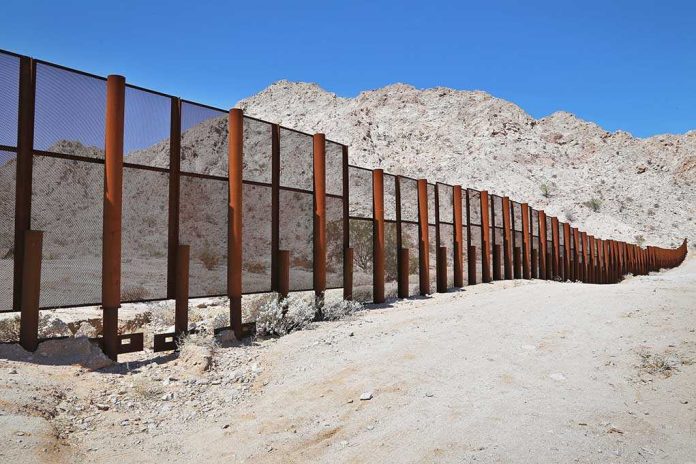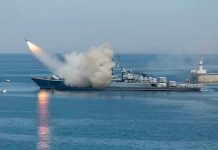
When a Texas police officer was shot in the neck outside an ICE detention facility by suspects wearing body armor, it exposed the absurd risks law enforcement face daily—risks our leaders seem increasingly more interested in explaining away than eliminating.
At a Glance
- Texas officer shot in the neck during attempted breach of ICE detention center by multiple armed suspects in body armor
- Suspects arrested after shootout and standoff, raising alarms over protester tactics and law enforcement vulnerability
- Incident highlights tensions between federal/state enforcement, activist escalation, and mounting costs of border security
- Ongoing debate: is protective gear at protests about safety, or does it signal intent to commit violence?
A Brazen Attack on Law and Order in Texas
On July 4th, Texas law enforcement responded to what should have been a routine security concern outside an ICE detention center. Instead, they found themselves on the receiving end of a hail of bullets, as multiple suspects—decked out in body armor and masks—attempted to breach the facility. In the gunfire that followed, a Texas police officer was shot in the neck. Thankfully, the officer survived, but the brazenness of this attack is a stark reminder of just how emboldened some criminal elements have become. When suspects show up to government facilities dressed like they’re auditioning for a Hollywood riot scene, it’s clear something is rotten—and it’s not just in the state of Texas.
The suspects, arrested after a tense standoff, were reportedly prepared for war. That’s not hyperbole. According to law enforcement, these individuals wore body armor and carried multiple firearms. What used to be the stuff of nightmares for law-abiding citizens has become a new normal for law enforcement on the frontlines of illegal immigration and border security. But let’s not kid ourselves: this isn’t just about one “isolated” incident. It’s a symptom of a broader, festering problem—one our political class seems more interested in tolerating than solving.
Body Armor, Masks, and the War on Enforcement
The Texas attack comes on the heels of a disturbing trend: violent activists and criminal opportunists using body armor and masks at protests and during criminal acts. Los Angeles, another favorite playground for activists, has seen its share of masked agitators exploiting demonstrations to provoke violence, vandalize property, and clash with police. Supporters claim this gear is necessary for “self-defense” against police, but let’s call this what it is: an excuse for premeditated confrontation and chaos. When so-called “peaceful protesters” show up armored and masked, common sense tells us they’re not there for a candlelight vigil.
Law enforcement and even district attorneys are starting to push back. After an activist in Los Angeles distributed face shields at an anti-ICE protest, he was indicted for aiding civil disorder. The prosecution’s reasoning? If you’re gearing up for battle, you’re not a bystander. It’s a stance that’s long overdue, but in our upside-down world, the loudest outrage is reserved not for the officers risking their lives, but for the agitators who get arrested for distributing “protective gear.” How many more officers have to get shot before we admit that treating every protest as a potential riot isn’t paranoia—it’s pragmatism?
The Real Cost of Political Games at the Border
Incidents like the Texas shooting are not happening in a vacuum. The state has poured over $11 billion into border security through Operation Lone Star, a massive state-run immigration enforcement effort. Meanwhile, the federal government debates how much to reimburse states for protecting the border—while also pausing or eliminating grants that address the humanitarian fallout of the border crisis. According to the latest reconciliation bill, billions more are earmarked for reinforcing border barriers and local enforcement, but even that faces obstacles from bureaucratic rulemaking and partisan wrangling.
And let’s not forget the bigger picture: while law enforcement is asked to do more with less, the very real threat of fentanyl smuggling, transnational gangs, and unchecked illegal crossings endangers every American family. The policy focus in Washington remains stuck in a loop—“comprehensive reform” that never comes, endless debates about who’s to blame, and a parade of virtue-signaling press releases. Meanwhile, officers on the ground are left to deal with the consequences—including being shot in the line of duty by suspects who come ready for war.
Where Does This End?
There’s a reason ordinary Americans are fed up. We watch as the people sworn to protect us are targeted, while politicians and activists tie their hands, second-guess their every move, and then act surprised when chaos erupts. The debate over whether body armor and shields at protests are about “protection” or “provocation” is a distraction from the obvious: when suspects show up dressed for violence, violence follows. The real question isn’t who’s to blame for the latest incident—it’s how much longer we’ll tolerate policies and rhetoric that put law enforcement and citizens in harm’s way just to appease the loudest radicals.
Until leaders are willing to defend the rule of law unequivocally, incidents like the Texas shooting will remain all too common—and the cost will be paid not in headlines, but in blood.
Sources:
CBP’s Primary Mission Areas in 2025














